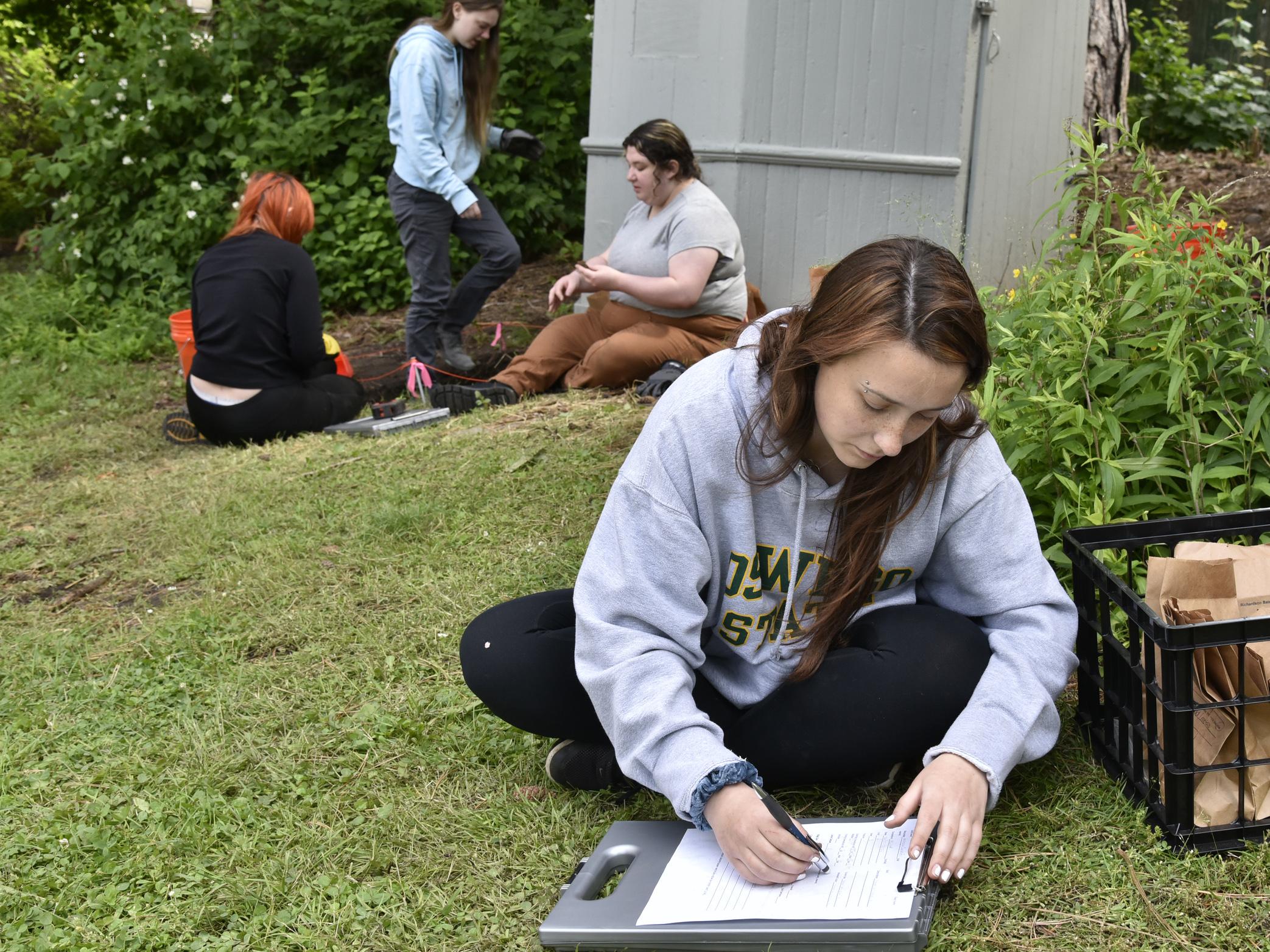SUNY Oswego anthropology major Nerissa Conklin, shown working at the summer 2022 Archaeological Field School at the Richardson-Bates House Museum, hosted an “Antiques Roadshow” type event to learn more about what community members were finding and what these items said about local history.
SUNY Oswego senior anthropology major Nerissa Conklin had the opportunity to work with the Oswego community to learn more about local history through found items.
Conklin hosted an “Antiques Roadshow” type event this spring at the Richardson-Bates House Museum in Oswego, collecting data found from eight properties for research. In the process, she hoped community members also could learn more about these items and their connections with the history of Oswego.
Conklin was among the SUNY Oswego students working the summer 2022 Archaeological Field School at the Oswego County Historical Society's Richardson-Bates House Museum under anthropology faculty member and mentor Alanna Ossa. For that project, students excavated a midden (trash heap) at the historic site to learn more about the property’s history and life in general in the 19th century.
When people learned about it, they started reaching out to Ossa “because they had found items in their yards that were similar to what we were finding in the field school,” Conklin explained.
“They had been hoping that she would be able to identify their items and give them more information about what they were and what time period they could have been from,” Conklin said. “We quickly became interested in what kinds of data we could collect from a large-scale project involving the local community, because if these people were reaching out there definitely had to be more who had found similar items as well.”
In addition, because community archaeology has become an increasingly popular trend in the world of anthropology, “it was the perfect opportunity to try an experimental project of my own, where I would be relying on the local community to provide my data for me,” Conklin added.
Participants had the opportunity to donate or loan their items for the study, although Conklin offered to take photos in case attendees felt some kind of connection to what they found.
The items included ceramics, glass, metal, a rib from a cow, clam shells, coal and even an uncultured pearl.
During a Quest presentation on April 19, Conklin explained her findings, while saying her research could represent the beginning of a larger community archaeology project.
"The one study is only one small glimpse into the socioeconomic organization of 19th and 20th century Oswego," Conklin noted. "The great thing about this project is that it can be repeated, and those completing it will continue to get new, relevant data that will continue to grow upon the understanding of Oswego's historic socioeconomic organization."
For Conklin, the event and capstone project build on so many lessons learned inside and outside Oswego classrooms, especially working with Ossa.
The summer field work, “combined with my archaeology and cultural resource management (CRM) classes, have prepared me to take on this project,” Conklin said. “Working closely with my advisor has also been a huge help, as she is a professional archaeologist with very extensive knowledge and a wide range of experiences that I have been fortunate enough to learn from.”




